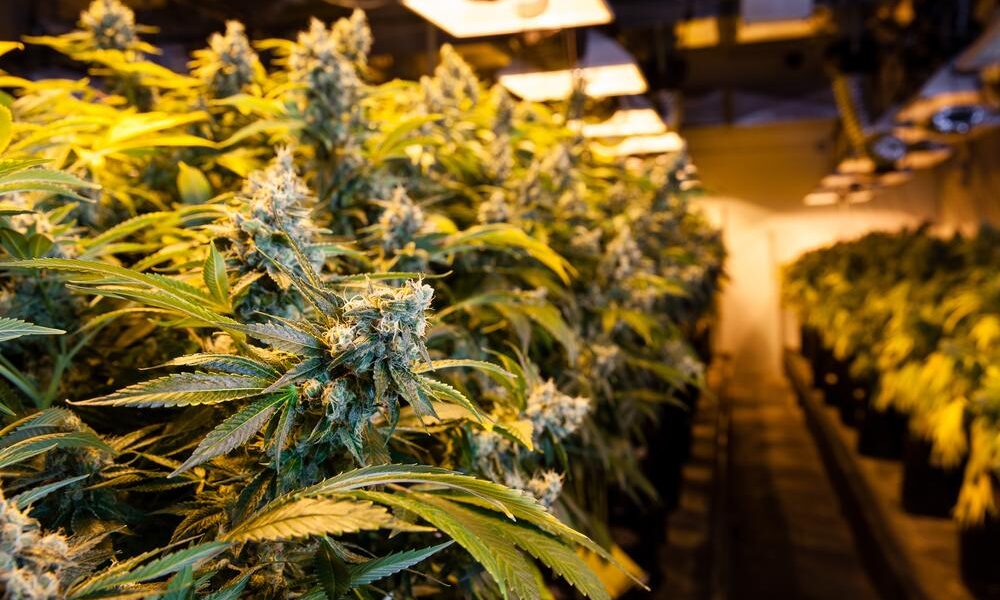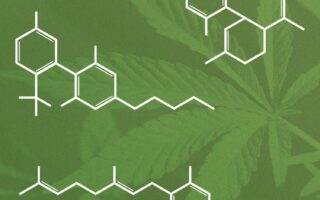Welcome to the vibrant world of cannabis, where a rich tapestry of culture, science, and tradition intertwines with an ever-evolving lexicon. As the legal landscape surrounding marijuana continues to shift, so too does the language we use to discuss it. From seasoned connoisseurs to curious newcomers, understanding the terminology associated with cannabis can unlock deeper insights into its cultivation, consumption, and effects. In this article, we will explore essential cannabis terms that not only demystify the plant but also enrich your appreciation of its many facets—whether you’re delving into the intricacies of strains, navigating the myriad consumption methods, or contemplating the art of cannabis cultivation. Join us as we journey through a glossary that illuminates the nuances of this fascinating herbal companion.
Table of Contents
- Understanding the Basics of Cannabis Terminology
- Navigating Strain Types and Their Effects
- Decoding Cannabis Consumption Methods
- The Importance of Lab Testing and Cannabinoid Profiles
- Q&A
- Wrapping Up
Understanding the Basics of Cannabis Terminology
When diving into the world of cannabis, familiarity with certain terms can enhance your understanding and experience. Firstly, it’s important to recognize key cannabinoids and their effects. Here’s a quick overview of some common terms:
- THC (Tetrahydrocannabinol): The psychoactive compound responsible for the ‘high’ feeling.
- CBD (Cannabidiol): Non-psychoactive, often used for therapeutic benefits without the high.
- Terpenes: Organic compounds that influence aroma and flavor; they can also affect the strain’s effects.
- Indica: Strains typically associated with relaxing effects.
- Sativa: Strains known for uplifting and energizing effects.
Understanding these basic terms lays the groundwork for exploring more nuanced discussions about cannabis. To further simplify the terminology, consider the following table that differentiates between types of cannabis effects:
| Type | Effects |
|---|---|
| Indica | Calming, sedative |
| Sativa | Euphoric, energizing |
| Hybrid | Balanced, varying effects depending on the strain |
Navigating Strain Types and Their Effects
The landscape of cannabis strains is as diverse as the users who seek them. Each strain type boasts unique characteristics and effects that can influence the experience significantly. Understanding the three primary strain categories helps consumers align their goals with the right product. Among these types are:
- Indica: Typically associated with a relaxing effect, these strains are perfect for unwinding after a long day. They often help with sleep and pain relief.
- Sativa: Known for their uplifting properties, Sativas can enhance mood and creativity, making them suitable for social settings and daytime use.
- Hybrid: By combining elements of both Indica and Sativa, hybrids can offer a balanced experience, catering to various needs and preferences.
Moreover, the specific effects of each strain—ranging from euphoria and energy to relaxation and introspection—are largely influenced by terpenes and cannabinoids present in the plant. To further illustrate the potential effects of different strains, here’s a simple table summarizing popular strains and their primary effects:
| Strain Name | Type | Primary Effects |
|---|---|---|
| Granddaddy Purple | Indica | Relaxation, Stress Relief |
| Sour Diesel | Sativa | Euphoria, Energy |
| Girl Scout Cookies | Hybrid | Happy, Creative |
By appreciating the nuances between these strain types, consumers can navigate the cannabis universe more effectively, ensuring they select the perfect strain to align with their desired outcomes. Whether it’s relaxation, creativity, or a balanced experience, the right strain is crucial to enhancing one’s cannabis journey.
Decoding Cannabis Consumption Methods
Understanding how to consume cannabis is essential for any enthusiast looking to optimize their experience. There are a variety of methods that cater to different preferences, each with its own unique characteristics. Some of the most common methods include:
- Smoking: This traditional approach involves rolling cannabis in a joint or packing it in a pipe or bong. It provides a quick onset of effects.
- Vaping: Utilizing a vaporizer heats the cannabis to a temperature that releases active compounds without combustion. This method is often considered healthier than smoking.
- Edibles: Incorporating cannabis into food or drink allows for a discreet and tasty way to consume. However, effects may take longer to set in, resulting in a delayed onset.
- Tinctures: These liquid preparations are taken sublingually (under the tongue) for rapid absorption and dosing precision. They can also be added to beverages or foods.
- Topicals: Applied directly to the skin, these products deliver localized relief without psychoactive effects, perfect for targeting specific areas of discomfort.
Each method affects individuals differently, so experimentation is key in finding the right fit for your needs. If you’re considering consuming cannabis for therapeutic or recreational purposes, it’s crucial to understand the potency and onset time associated with each method. To make informed choices, here’s a simplified table outlining the basics:
| Consumption Method | Onset Time | Duration of Effects | Psychoactive |
|---|---|---|---|
| Smoking | Immediate | 1-3 hours | Yes |
| Vaping | Immediate | 2-3 hours | Yes |
| Edibles | 30 minutes - 2 hours | 4-8 hours | Yes |
| Tinctures | 15-45 minutes | 2-6 hours | Yes |
| Topicals | Variable | Variable | No |
The Importance of Lab Testing and Cannabinoid Profiles
Lab testing serves as a critical bridge between the world of cannabis cultivation and consumer safety, ensuring that the products reaching the market are both effective and safe for use. With the variety of cannabinoids present in cannabis, understanding these profiles can significantly enhance the consumer experience by providing information about potential therapeutic benefits. Lab results can reveal the levels of THC, CBD, and various other cannabinoids as well as terpenes, which contribute to the plant’s aroma and effects. Without these insights, consumers may choose products that do not align with their health and wellness objectives.
Moreover, transparency in lab testing fosters trust within the cannabis community. When consumers can access clear and accurate cannabinoid profiles, they are empowered to make informed choices tailored to their needs. Important aspects to consider from lab testing include:
- Potency: Reflects the relative strength of cannabinoids.
- Contaminant testing: Ensures the absence of pesticides, heavy metals, and mold.
- Terpene profiles: Provide insight into the flavor and therapeutic effects of different strains.
The following table summarizes key cannabinoids and their typical effects, enhancing understanding of how they may interact with users:
| Cannabinoid | Typical Effects |
|---|---|
| THC | Euphoria, pain relief, increased appetite |
| CBD | Calmness, anxiety reduction, anti-inflammatory |
| CBC | Anti-inflammatory, mood enhancement, relief from pain |
Q&A
Q&A: Understanding Cannabis Terminology
Q1: What is the difference between “cannabis,” “hemp,” and “marijuana”?
A1: Great question! While often used interchangeably, these terms refer to distinct aspects of the plant. “Cannabis” is the umbrella term for the genus of plants that includes both hemp and marijuana. “Hemp” specifically refers to varieties of cannabis that contain less than 0.3% THC, the psychoactive compound. It’s primarily cultivated for industrial purposes like textiles, food, and CBD production. Conversely, “marijuana” refers to cannabis strains that contain higher levels of THC and are typically associated with recreational or medicinal use.
Q2: What exactly is THC and how does it affect the body?
A2: THC, or tetrahydrocannabinol, is the primary psychoactive compound found in cannabis. When consumed, it binds to cannabinoid receptors in the brain, leading to effects such as euphoria, altered perception, and relaxation. These effects can vary based on the strain, dosage, and individual tolerance, making THC an intriguing compound for both recreational users and those seeking relief from various medical conditions.
Q3: Can you explain the term “CBD”?
A3: Certainly! CBD, or cannabidiol, is another prominent compound found in cannabis. Unlike THC, CBD is non-psychoactive, meaning it won’t produce a “high.” It’s gained immense popularity for its potential therapeutic effects, which may include reducing anxiety, alleviating pain, and improving sleep. Because of its health benefits, CBD is often extracted from hemp and used in various products, such as oils, edibles, and topical creams.
Q4: What does “indica,” “sativa,” and “hybrid” mean in relation to cannabis strains?
A4: These terms refer to the three main types of cannabis strains. “Indica” strains are known for their relaxing effects and are often sought after for nighttime use or to ease muscle tension. ”Sativa” strains tend to be more uplifting and energizing, making them popular choices for daytime use. “Hybrid” strains are a blend of the two, combining effects from both indica and sativa, allowing for a wide range of experiences tailored to the user’s preference.
Q5: What are “terpenes,” and why are they important?
A5: Terpenes are organic compounds found in cannabis (and many other plants) responsible for their distinct aromas and flavors. Beyond creating unique sensory experiences, terpenes may also contribute to the plant’s therapeutic qualities. For example, myrcene can promote relaxation, while limonene is often associated with mood enhancement. Exploring terpenes can enhance your understanding of how different strains interact with your body and mind.
Q6: What does “cooking with cannabis” entail?
A6: Cooking with cannabis involves infusing the plant’s compounds—primarily THC and CBD—into edible foods. This process typically requires creating a cannabis-infused fat, such as butter or oil, which can then be used in various recipes. It’s crucial to be mindful of dosage, as edibles can produce stronger and longer-lasting effects compared to other consumption methods. Start low and go slow to find the right balance for your experience!
Q7: What does “microdosing” mean, and who might it benefit?
A7: Microdosing refers to taking very small amounts of cannabis to experience subtle effects without the intense high associated with larger doses. This practice can benefit those seeking relief from anxiety, chronic pain, or other issues while maintaining their daily activities and responsibilities. Microdosing encourages a balanced approach, allowing users to find their comfort zone with cannabis.
Q8: What is the significance of “cannabinoids”?
A8: Cannabinoids are the chemical compounds found in cannabis that interact with the body’s endocannabinoid system. This system plays a vital role in regulating many functions, including mood, appetite, and pain perception. In addition to THC and CBD, over a hundred other cannabinoids exist, each with its unique properties and potential benefits. Understanding cannabinoids can empower users to choose specific products that align with their health and wellness goals.
Feel free to explore and experiment with these terms, as the world of cannabis continues to expand and evolve!
Wrapping Up
As we draw the curtains on our exploration of cannabis terms, it becomes clear that this evolving lexicon is more than just a collection of words; it’s a reflection of a culture in transformation. From the intricacies of strains and methods to the subtleties of consumption and legislation, the language surrounding cannabis continues to adapt and grow alongside our understanding of the plant itself. Whether you’re a seasoned enthusiast or a curious newcomer, having a grasp of these terms can enrich your experience and deepen your appreciation for this multifaceted herb. As we navigate the ever-changing landscapes of legality, health, and recreation, let this guide serve as a compass, helping you to confidently traverse the world of cannabis. Stay curious, stay informed, and remember: knowledge is the true high.



